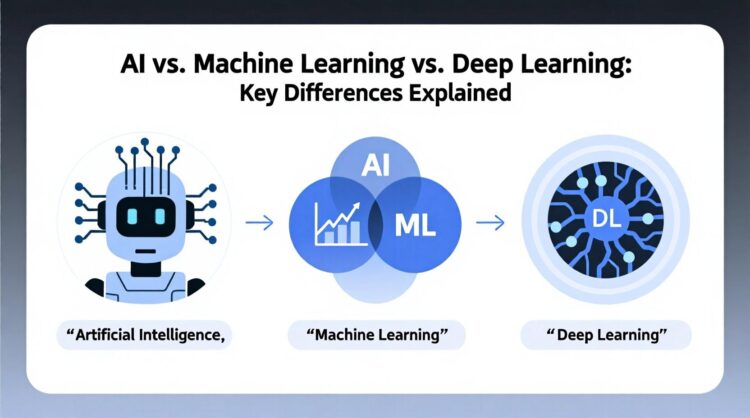
HowToForYou.com – In recent years, the digital commerce landscape has undergone a seismic shift, thanks in large part to the rapid advancement of artificial intelligence. What once required teams of developers, marketers, and product managers to execute over months can now be accomplished in a matter of hours—with remarkable precision. But beneath the surface of this convenience lies a deeper narrative: one of evolving business dynamics, technological dependence, and the new responsibilities entrepreneurs must shoulder in an increasingly automated marketplace.
A Double-Edged Transformation: Accessibility vs. Oversaturation
The surge in AI-powered ecommerce tools has radically lowered the entry barrier for launching online businesses. Platforms like Squarespace, Wix, and 10Web now integrate AI to help users build fully functional stores through guided questions or simple chats. This shift has empowered small business owners, freelancers, and hobbyists to become legitimate online retailers without mastering code or spending heavily on web design.
However, this accessibility comes at a cost. As AI reduces friction for new entrants, the online marketplace grows increasingly saturated. Differentiating your brand now requires more than just launching quickly—it demands strategic thinking, niche expertise, and ongoing optimization that often can’t be fully outsourced to algorithms.
Website Creation in the Age of AI: Not Just Templates, But Tailored Experiences
AI website builders have emerged as one of the most disruptive innovations in ecommerce. Unlike traditional website creation tools that rely on static templates and manual design, these builders interpret user inputs—like business goals, industry type, and aesthetic preferences—to deliver custom layouts, images, and even content.
Take Squarespace Blueprint, for example. It intuitively aligns web design with brand personality by selecting typography, colors, and layouts that suit creative industries. On the other hand, Wix’s AI assistant offers a more conversational experience, tailoring solutions for everything from inventory tracking to events management. Meanwhile, 10Web narrows its focus on ecommerce performance, optimizing for international selling and seamless checkout processes.
Still, for all their advantages, these AI-driven tools are not without limitations. Advanced customization can become difficult as you scale. Business owners with strong visual branding requirements or complex back-end needs may find themselves constrained by the builder’s predefined logic.
From Guesswork to Data Science: AI-Powered Product Research
What used to be the domain of industry consultants and data analysts is now increasingly handled by accessible AI tools. AI-powered platforms such as Eliotron allow ecommerce owners to scan millions of listings, distilling real-time insights about what products are trending and which niches remain untapped. This approach removes much of the uncertainty from product sourcing, turning competitive intelligence into a democratic resource.
Even deeper insights come from platforms like Insight7, which interprets customer sentiment from videos and calls, giving sellers a nuanced understanding of their audience’s needs and frustrations. Tools like Quantilope go further still, using automated testing to refine pricing strategies based on customer behavior—all in a fraction of the time traditional methods require.
Smart Inventory Management: AI as the Fulfillment Brain
Beyond design and research, AI has become a crucial player in managing the complexities of inventory. With solutions like Claid AI and Photoroom, even product photography can now be automated, complete with clean backgrounds and angle variations. Combined with AI-generated product descriptions from tools like Hostinger’s Product Information Generator, store owners can populate entire catalogs in hours rather than days.
On the operational side, platforms like Cin7 use historical and real-time sales data to forecast demand and manage stock levels with precision. They don’t just alert you when it’s time to restock—they can generate purchase orders, communicate with suppliers, and even update your online listings automatically.
The Road Ahead: Opportunity or Overdependence?
As AI continues to expand its reach across ecommerce, the big question becomes: who truly holds the power? Entrepreneurs now have the capability to automate nearly every aspect of their business—from marketing and logistics to customer support and analytics. But in doing so, they risk becoming overly reliant on black-box algorithms whose decision-making processes are often opaque.
Moreover, with automation leveling the playing field, brand identity, customer trust, and human creativity will matter more than ever. The businesses that thrive won’t just be the ones that implement AI the fastest, but those that learn how to collaborate with it meaningfully—knowing when to let the machine take over, and when to step in with the human touch.
Conclusion: AI Is the Great Equalizer—But It’s Also the Great Divider
AI has undeniably democratized the ecommerce space, offering powerful tools to entrepreneurs of all sizes. Yet this democratization is not a panacea. As the digital marketplace becomes more crowded and consumer expectations rise, success will depend less on how quickly you launch and more on how intelligently you navigate the AI-powered ecosystem.
In the end, the future of ecommerce may not be about who uses AI but how they use it.





